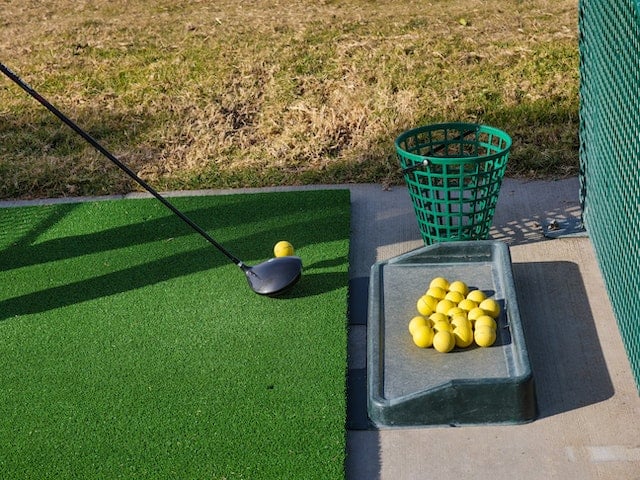Driving a golf ball with precision and distance is a fundamental skill that many golfers aspire to master. Whether you’re a beginner looking to improve your golf game or an experienced player seeking to refine your technique, this comprehensive step-by-step guide will walk you through the process of how to drive a golf ball effectively. From selecting the right equipment to perfecting your swing, we’ll cover everything you need to know to enhance your driving skills and boost your performance on the course.
Overview
Choose the Right Equipment
Establish a Solid Stance
Grip the Club Correctly
Adopt the Proper Setup Position
Execute the Swing
Practice and Refine
Conclusion
1. Choose the Right Equipment
Selecting the Perfect Driver
The driver is the most critical golf club for driving the golf ball. Consider factors such as clubhead size, loft, shaft flex, and adjustability options. Consult with a golf professional or knowledgeable salesperson to find the right driver for your swing speed and skill level.
Ensuring Proper Club Fitting
Get your driver custom-fitted to your body type and swing mechanics. This involves adjusting the driver shaft length, loft angle, and lie angle to optimize your launch conditions and accuracy.

2. Establish a Solid Stance
Positioning Your Feet
Stand with your feet shoulder-width apart. Align your feet parallel to the target line. This is going to create a stable base that is going to give you a great foundation for your drive.
Aligning Your Body
Position your hips and left shoulder (If you are right-handed) parallel to the target line for proper alignment. Ensure your body and club face is square (point straight) to the target so you can hit straight.
Maintaining Proper Weight Distribution
Distribute your weight evenly between both feet, placing it more towards the balls of your feet for balance and stability.

3. Grip the Club Correctly
Placing Your Hands on the Grip
Hold the golf club with your non-dominant hand (left hand for right-handed golfers) first, placing it at the top of the grip. Allow a small gap between your palm and the club grip.
Overlapping or Interlocking Grip
Wrap your dominant hand’s little finger around the index finger of your non-dominant hand to form an overlapping or interlocking grip. Ensure a firm but relaxed grip, avoiding excessive tension.
Checking Grip Pressure
Maintain a consistent grip pressure throughout the swing, neither too tight nor to loose. This is going to keep the clubhead more stable and not compensate the angel in any direction.

4. Adopt the Proper Setup Position
Ball positioning
Place the golf ball slightly ahead of the center of your stance, aligned with your front foot is crucial for the ball position. This promotes a more upward strike on the ball for optimal launch, which is going to lead to a longer average driver distance.
Spine Tilt and Body Posture
Slightly tilt your spine away from the target, maintaining a straight back. Bend forward from the hips, creating a slight knee flex and an athletic posture.
Flexing Knees and Bending from the Hips
Flex your knees slightly to engage your lower body and provide stability. Bend forward from the hips, ensuring your arms hang naturally in front of you.

5. Execute the Swing
Initiating the Backswing
Start the swing by turning your shoulders away from the target while maintaining a stable lower body. Keep your arms relaxed and maintain the triangle formed by your arms and shoulders. This is going to make your swing more consistent which is going lead to better drives.
Generating Power with the Lower Body
As you transition from the backswing to the downswing, shift your weight onto your front foot, starting with a slight bump of the hips. This generates more power and creates a dynamic sequence of movement, and is going to make you able to hit your golf ball farther.
Unleashing Power through the Impact Zone
Rotate your hips aggressively toward the target, allowing your arms and the club to naturally follow. Maintain a smooth, accelerating motion, making good contact with the ball at impact, this will generate more club head speed and increase your average driving distance.
Follow-Through
Extend your arms fully through the swing, allowing the golf club to continue its swing path toward the target. Rotate your body toward the target, maintaining balance and stability.

6. Practice and Refine
Dedicate Regular Practice Sessions:
It might sound like a cliche but setting aside dedicated time on the driving range to work on your driving technique is key for improving. Practice makes perfect and when you have done it 1000 times you are going to be able to hit the perfect drive without even thinking.
Utilize Training Aids and Drills
Incorporate training aids like alignment sticks, swing trainers, and impact bags into your practice routine. They can help reinforce proper mechanics and making sure you are hitting the golf ball straight.
Seek Professional Guidance
Consider working with a golf instructor who can provide personalized feedback and guidance tailored to your specific needs. This is going to be crucial for the evolution of your golf swing and ability to hit the perfect drive. The professionals are going to able to see small things that are going to make a massive difference for your overall golfing ability.

Conclusion
Mastering the art of driving a golf ball requires a combination of technical knowledge, practice, and dedication. By following this comprehensive step-by-step guide, you have gained insights into selecting the right equipment, establishing a solid stance, gripping the club correctly, adopting the proper setup position, executing the swing, and refining your skills through practice. Remember, consistency and a focus on proper mechanics will lead to improved performance on the golf course. So, take these instructions, head to the range, and embark on the journey to becoming a better golfer. With patience and practice, you’ll soon achieve accurate and powerful drives that enhance your overall golfing experience.

